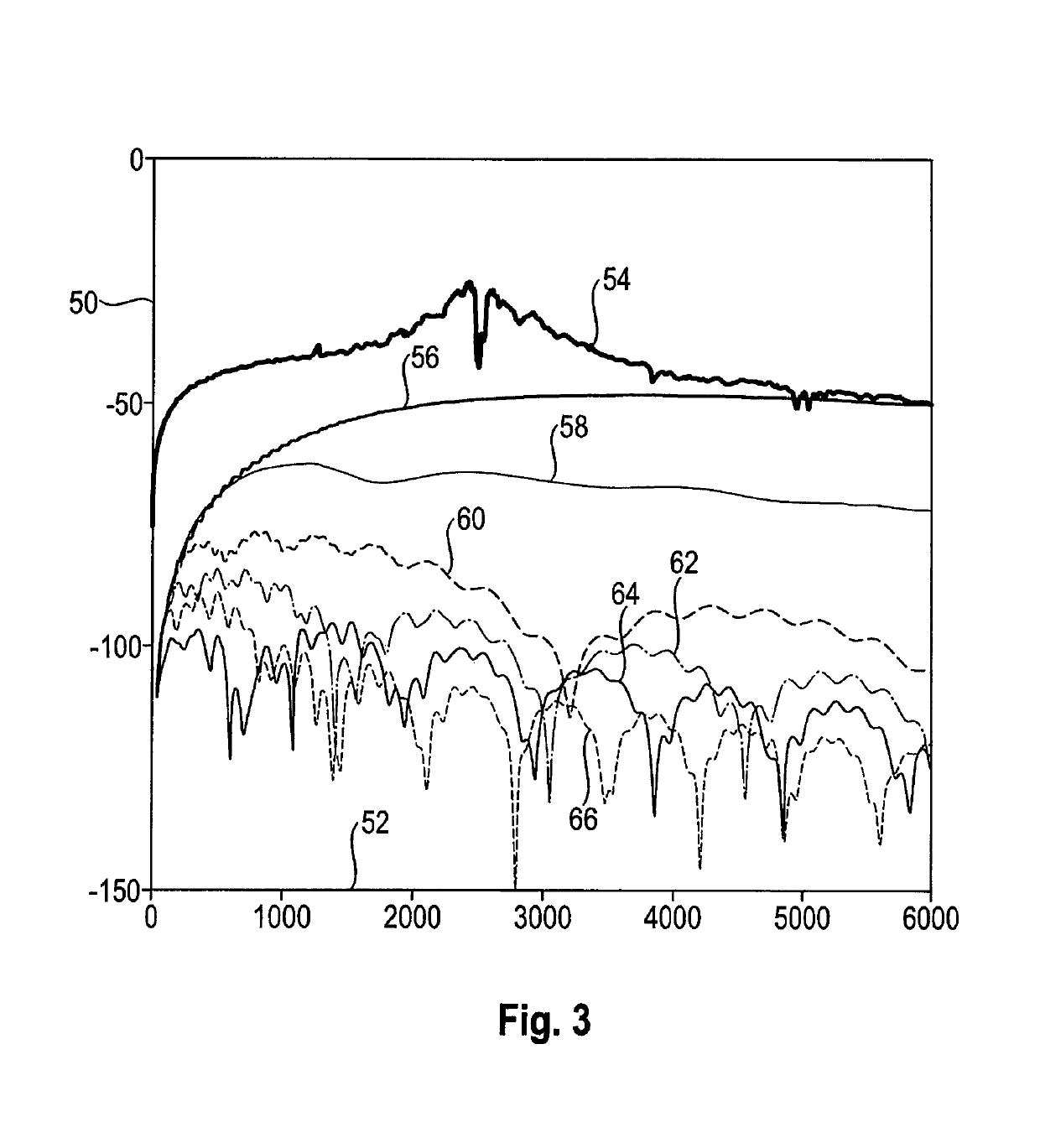Cable for transmitting electrical signals
a technology of electrical signals and cables, applied in the direction of cables, insulated conductors, conductors, etc., can solve the problems of cable cost and inflexibility, electrical signal crosstalk, and different permittivities of dielectrics
- Summary
- Abstract
- Description
- Claims
- Application Information
AI Technical Summary
Benefits of technology
Problems solved by technology
Method used
Image
Examples
fourth embodiment
[0071]FIG. 7 shows a fifth preferred embodiment of a cable 10 according to the invention, wherein parts with the same function are identified with the same reference symbols as in FIGS. 1, 4, 5 and 6, so that regarding their explanation reference is made to the above description relating to FIGS. 1, 4, 5 and 6. In FIG. 7, different hatchings or fillings show different values for the relative permittivity εr. An outer casing is not represented in FIG. 7. In this embodiment, the wires 16, 18, 20, 22 are surrounded by identical dielectrics 24, 26, 28, 30, so that their relative permittivity εr is substantially identical. The additional dielectrics 72 and 74 are arranged on the inner side of the shielding casing 14, in each case such that these are each located between a dielectric 24, 26, 28, 30 of the wires 16, 18, 20, 22 and the shielding casing 14. In contrast to the fourth embodiment shown in FIG. 6, the additional dielectrics 72 and 74 are built up in layers with the further diele...
second embodiment
[0072]FIG. 8 shows a sixth preferred embodiment of a cable 10 according to the invention, wherein parts with the same function are identified with the same reference symbols as in FIGS. 1, 4, 5, 6 and 7, so that regarding their explanation reference is made to the above description relating to FIGS. 1, 4, 5, 6 and 7. In FIG. 8, different hatchings or fillings show different values for the relative permittivity εr. An outer casing is not represented in FIG. 8. In this embodiment, the wires 16, 18, 20, 22 are exclusively surrounded by the further dielectric 72 to 74 and the dielectric 72, 74 in each case extends, analogously to the second embodiment according to FIG. 4, from the wires 16, 18, 20, 22 up to the shielding casing 14 and thereby in each case fills a space delimited, in cross section, in parabolic form. In this way, the effective values for the relative permittivity εr(m,n) of the line with the wires 16, 18 differ from the value for the relative permittivity εr(m,n) of the ...
PUM
| Property | Measurement | Unit |
|---|---|---|
| relative permittivity εr | aaaaa | aaaaa |
| relative permittivity εr | aaaaa | aaaaa |
| relative permittivities εr | aaaaa | aaaaa |
Abstract
Description
Claims
Application Information
 Login to View More
Login to View More - R&D
- Intellectual Property
- Life Sciences
- Materials
- Tech Scout
- Unparalleled Data Quality
- Higher Quality Content
- 60% Fewer Hallucinations
Browse by: Latest US Patents, China's latest patents, Technical Efficacy Thesaurus, Application Domain, Technology Topic, Popular Technical Reports.
© 2025 PatSnap. All rights reserved.Legal|Privacy policy|Modern Slavery Act Transparency Statement|Sitemap|About US| Contact US: help@patsnap.com



